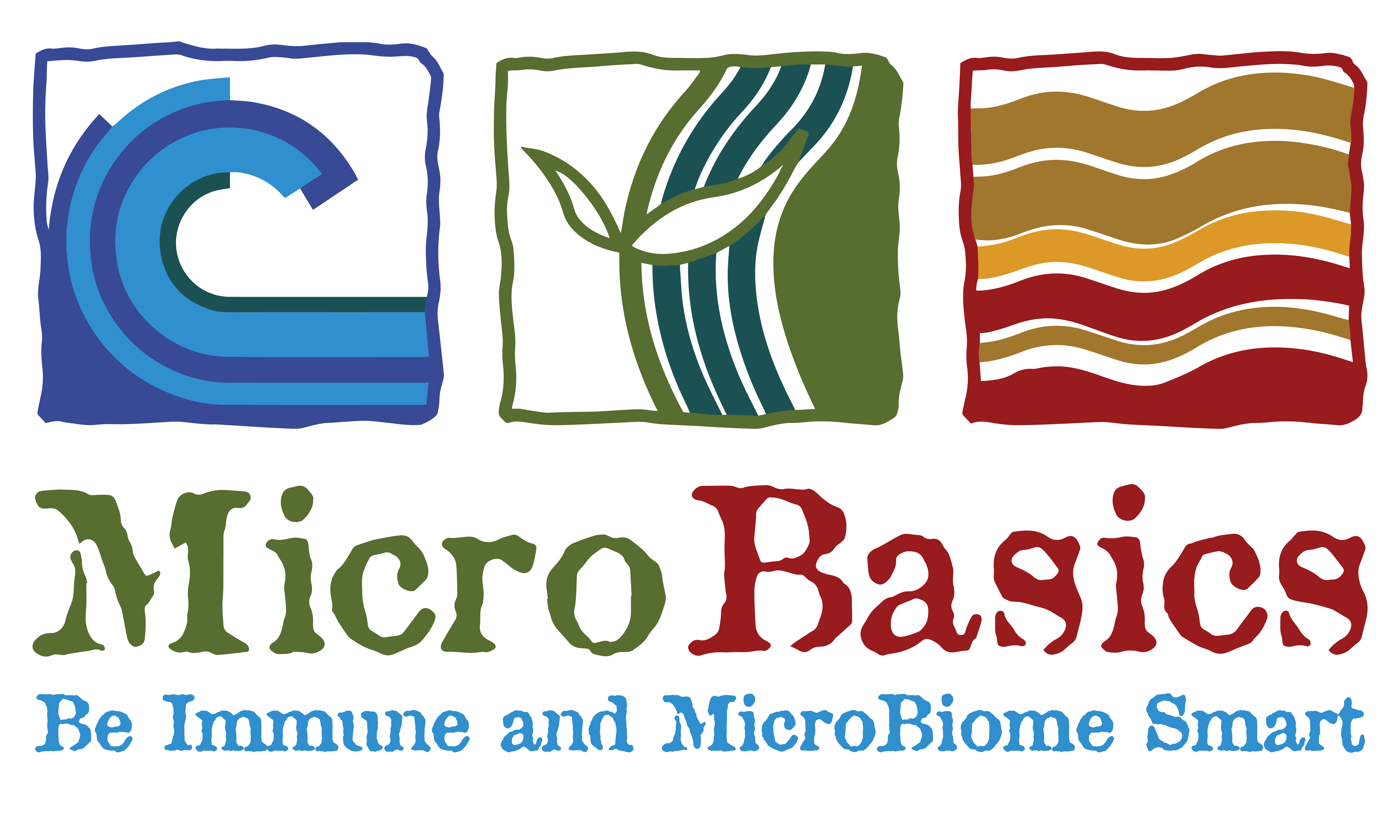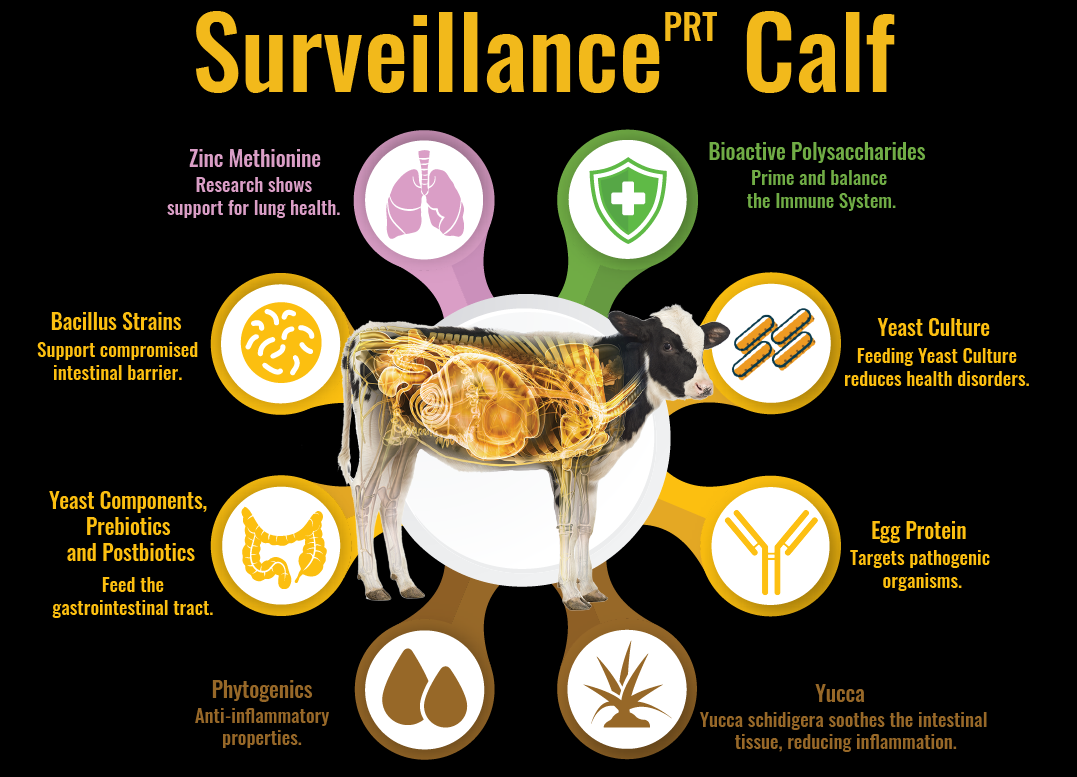Early identification and treatment of disease will increase the chances of survival for the young calf. Train employees to quickly pick up on signs that a calf is not feeling well. Depression, lethargy, not eating, elevated body temperature, ocular or nasal discharge, head tilt, and scours are some common signs a calf may not be doing well. Work with your veterinarian to establish protocols for early identification and treatment of disease.
In a world where antibiotic resistance is becoming an issue and consumer perceptions are favoring products from animals that have never been treated with antibiotics, we need to be open minded and be utilizing new technologies to improve the health and welfare of our livestock. Surveillance Calf does just that as it provides support to the front-line defenses of the calf, as it supports and maintains intestinal health and supports rumen development.
What does Surveillance provide?
- Bacillus subtilis thrives in the intestines and produces large quantities of digestive enzymes to aid in the digestion of feed. Bacillus subtilis also helps to create an environment of competitive exclusion, where pathogenic bacteria are excluded from the space on the intestinal wall.
- Chelated zinc-methionine acts as an anti-diarrheal agent by protecting the lining of the intestine. Research has shown a 65% reduction in scours, an 18% improvement in average daily gain, a 20% improvement in feed efficiency when feeding zinc-methionine.
- Surveillance contains a unique blend of biologically active polysaccharides and polypeptides to provide immune support.
- Polysaccharides (a carbohydrate consisting of a number of sugar molecules bound together)
- Polysaccharides are prebiotics that feed and stimulate growth of beneficial gut bacteria.
- Prebiotics found in Surveillance also depress internal pathogens and increase the competency of the immune system.
- Polypeptides (chain containing a large number of amino-acids bound together to form part of a protein)
- Polypeptides can function as immunomodulators by supporting the immune system and preventing excess inflammation.
- Polysaccharides (a carbohydrate consisting of a number of sugar molecules bound together)
- Benefits of feeding yeast to calves include
- Improved digestion and utilization of nutrients
- Stabilization of rumen pH
- Encouragement of growth of beneficial bacteria
- Optimized animal performance
- Supports mineral retention
- Unlike calves, who do not receive maternal immunity until after birth, chickens pass immunity directly into the eggs they lay. Egg protein technology (EPT) can produce large concentrations of antibodies (IgY) specific to common bovine pathogens. Feeding these antibodies can provide a critical bridge from birth until the calf can build its own immunity.
- Yucca schidigera soothes the intestinal tissue, and reduces inflammation.
- Substances of plant origin that contain anti-inflammatory properties.
Yeast Components, Prebioticis, and Postbiotics
- Yeast cell wall (YCW) helps improve the barrier function of the small intestine.
- Pre and Postbiotics help to feed the gastrointestinal tract.
How is Surveillance used?
So when can the calf benefit from Surveillance? Here is a list of ways producers have found this supplement useful.
- Upon receiving drench dairy and beef calves with 15-30 ml/hd/day of surveillance.
- Supplement for gut development and illness prevention, 6-10 ml/hd/day added to milk feedings.
- Add to electrolyte feedings of sick calves, 15 ml/hd/day.
- Scours solution, drench 20 ml of Kaopectate and 30 ml of Surveillance down the throat.
- During any stressful event, weaning, shipping, etc. orally drench 20-30 ml
- 2021 has brought drought conditions to many areas of the United States. A lot of beef cattle are coming off summer pastures early, and many of the calves are also being weaned and/or shipped abruptly giving them little or no time to adjust to creep or ration feeds. This is a prime example of a time when Surveillance could definitely be used to help mitigate illness and aid transition onto dry feeds.
Where can you buy Surveillance?
Surveillance provides many opportunities to improve calf health and is a great alternative to antibiotic therapies. Surveillance can now be purchased through the Calf Distinction Store!
Written by: Mariah Gull, M.S.

